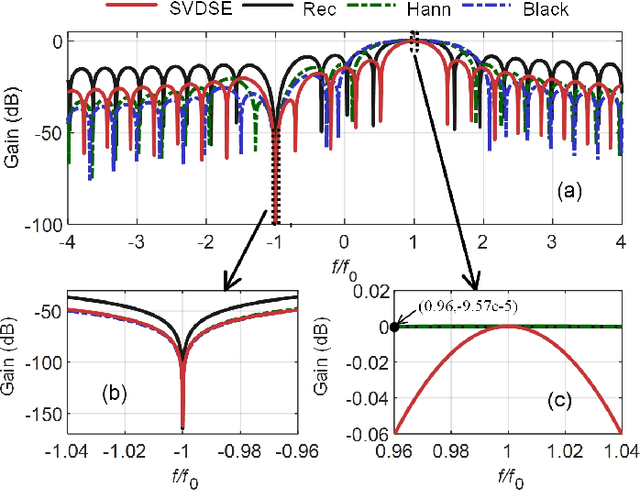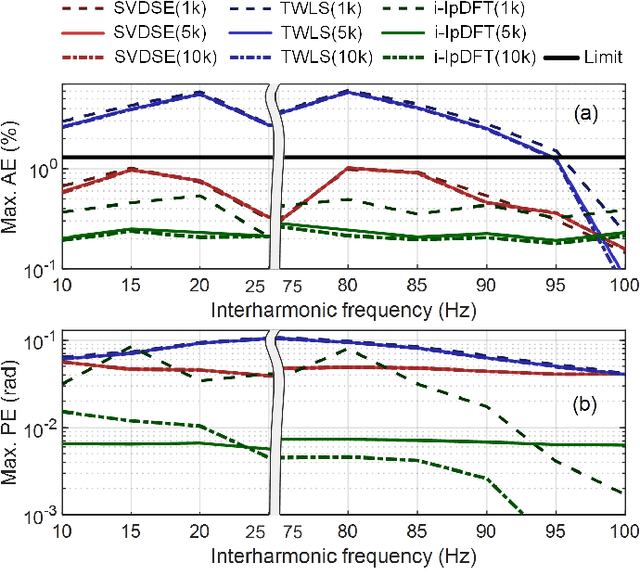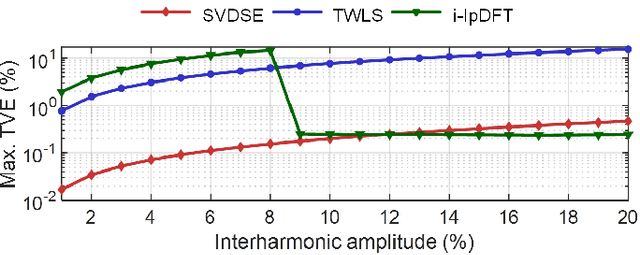Fuping Wang
A SVD-based Dynamic Harmonic Phasor Estimator with Improved Suppression of Out-of-Band Interference
Nov 16, 2022



Abstract:The diffusion of nonlinear loads and power electronic devices in power systems deteriorates the signal environment and increases the difficulty of measuring harmonic phasors. Considering accurate harmonic phasor information is necessary to deal with harmonic-related issues, this paper focuses on realizing accurate dynamic harmonic phasor estimation when the signal is contaminated by certain interharmonic tones, i.e. the out-of-band interference (OBI). Specifically, this work introduces the singular value decomposition into the Taylor-Fourier transform algorithm, deriving a general decomposition form for harmonic phasor filters, and yielding a set of adjustable parameters. Then these parameters are configured to minimize the negative influence of OBI on the dynamic harmonic phasor filters. Based on the recommended parameter values, the optimized harmonic estimator is obtained, and then tested under signals distorted by OBI, harmonic, noise, and in worse cases, frequency deviation, and some dynamic conditions. Test results show the proposal achieves good harmonic phasor estimation even under multiple interferences and dynamic scenarios, and has a much weaker dependence on OBI tones compared to conventional approaches.
A SVD-Based Synchrophasor Estimator for P-class PMUs with Improved Immune from Interharmonic Tones
Oct 19, 2021



Abstract:The increasing use of renewable generation, power electronic devices, and nonlinear loads in power systems brings more severe interharmonic tones to the measurand, which can increase estimation errors of P-class PMUs, cause misoperation of protection relays, and even threaten the stability of the power systems. Therefore, the performance of the P-class synchrophasor estimator under interharmonic interference should be evaluated and new estimation schemes that can improve the operational robustness are needed for various protection and control applications. In this paper, a synchrophasor estimator design for P-class PMUs that introduces singular value decomposition to the least square algorithm based on the Taylor series is proposed. By constructing an optimization with proposed adjustable parameters, finite impulse response filters with high transition band attenuation are designed. Numerical and experimental tests verify the proposed dynamic synchrophasor estimator performance and show an effective improvement in rejecting interharmonic tones, especially when a short time window and light computational burden are required.
 Add to Chrome
Add to Chrome Add to Firefox
Add to Firefox Add to Edge
Add to Edge